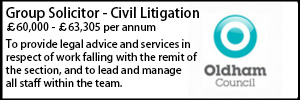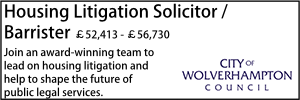Mayor defeats Court of Appeal challenge to removal of congestion charge exemption from minicab drivers
- Details
The Court of Appeal has found for the Mayor of London Sadiq Khan in a case brought by minicab drivers, despite judges being troubled by aspects of his actions.
Trade union Independent Workers Union of Great Britain brought the case against the Mayor and his agency Transport for London in an appeal against an order by Lewis J in July 2019 dismissing its challenge to changes made to the Greater London (Central Zone) Congestion Charging Scheme.
These removed an exemption from the charge for licensed private hire vehicles unless these are designated wheelchair accessible.
In the original case the IWUGB argued that this unlawfully indirectly discriminated against certain groups of minicab drivers on grounds of race and gender and against some passengers on grounds of disability contrary to s.19 of the Equality Act 2010; and was in breach of articles 8 and 14 of the Human Rights Act 1998.
Its appeal concerned only claims pursued under the Equality Act 2010.
In Independent Workers Union of Great Britain v The Mayor of London [2020] EWCA Civ 1046 the Court of Appeal heard that 94% of licensed minicab drivers in London are from black and minority ethnic backgrounds, with 71% of minicab drivers living in the capital’s most deprived areas, while 88% of taxi drivers are white and unaffected by the changes to the charging scheme.
Lady Justice Simler said: “This significant disparity of impact between black and minority ethnic minicab drivers on low incomes on the one hand and white taxi drivers on the other is stark and has raised legitimate questions about the measure adopted by the Mayor. It has made this appeal particularly troubling.”
Mr Khan has said that removal of the exemption was an attempt to reduce congestion caused in part by more than 18,000 minicabs entering the charge zone each day.
Lewis J had held that the aim of the measure was a legitimate one to reduce traffic and congestion without reducing the number of wheelchair-accessible minicabs.
Simler J said: “I do not accept that Lewis J made any error in coming to the conclusions he did. In my judgment, he was entitled on the evidence before him to do so for the reasons that follow.”
But she said that during the hearing “all members of the court were troubled by what appeared to be the apparent insertion of the requirement that there be no reduction of wheelchair accessible vehicles into the principal aim of reducing traffic and congestion”.
These concerns arose because “we wondered whether stating the maintenance of the existing level of wheelchair accessible vehicles as a second part of the aim could be regarded as a device designed to achieve a pre-determined outcome whereby taxi drivers were preferred over [minicab] drivers…our concern was that the real aim was simply to reduce or stem the increase in the number of minicabs in the [zone]”.
Singh LJ observed in the course of argument, the judgment noted, that if the true aim was simply to reduce the number of minicabs “there would be real concern about the legitimacy of such an aim bearing in mind the close correlation between minicab drivers and people from black and minority ethnic communities on the one hand, and the stark contrast with the predominantly white taxi driver workforce”.
Simler J said she was though persuaded that maintaining the current levels of wheelchair accessible vehicles for disabled passengers was both reasonable and legitimate and was not a device to protect taxis at the expense of minicab drivers.
Removing the charge exemption from taxis had been considered but was impractical because taxis are obliged to be wheelchair accessible and are compelled to accept any hire within set distances, so cannot refuse to enter the charge zone if their destination is there.
Mark Smulian
18-03-2026 1:00 pm
01-07-2026 11:00 am
























